- Home
- Ian Buruma
A Tokyo Romance Page 2
A Tokyo Romance Read online
Page 2
It is a charming film, not Truffaut’s very best perhaps, but wise and funny. I suppose the idea was to warn the viewer not to be taken in by exotic fantasies; true depth of feeling can only be found with people who have a culture in common. Transcending the borders of language and shared assumptions will result in disillusion.
I’m afraid that I refused to get the message. I fell in love with Kyoko. I wanted a Kyoko in my life, perhaps even more than one. How happy I would be in the land of Kyokos.
More than twenty years later, when I was living in London, I received an invitation to be part of a jury at a modest film festival in France. And there, among my fellow jury members, was a stylish middle-aged Japanese lady dressed in a kimono with a discreet pattern of pink cherry blossoms on a pale blue background. Hiroko, the former Pierre Cardin model and star in Truffaut’s film, was now the wife of a grand French fashion executive. I told her how I had once fallen in love with her. She replied in her soft tinkling voice: “Ça m’arrive souvent”; you’re not the first one to say that.
It must have been around the time I first set eyes on Kyoko, in 1972 or 1973, that I first saw a performance of Terayama Shuji’s theater group, Tenjo Sajiki, at the Mickery Theater in Amsterdam. Mickery, located in a former cinema, whose art deco fixtures were left intact, was for some years a mecca of avant-garde theater from all over the world. The young Willem Dafoe performed there with Theatre X and later the Wooster Group. There were groups from Poland, Nigeria, as well as most of the artistic capitals of the West. One of the more memorable visits was by a drama workshop formed by convicts at San Quentin prison in California (young women queued up around the block to meet the ex-cons). I used to go to Mickery regularly, hanging out, as was customary at the time, with the actors in the café after their performances.
Tenjo Sajiki, meaning the cheapest seats in the theater, or “the Gods” in English, was from Tokyo. The founder and director, Terayama Shuji, an aloof but charismatic figure dressed in dark suits and blue high-heeled denim shoes, was a poet, playwright, essayist, novelist, photographer, and filmmaker, who functioned as a kind of Pied Piper in Tokyo, gathering around him a shifting retinue of runaways, misfits, and eccentrics, who acted as living props in his surreal theatrical fantasies. Terayama’s plays and movies owed something to various Western influences—a bit of Fellini here, Robert Wilson there—but far more to Japanese fairground entertainments, carnival freaks, striptease shows, and other forms of theatrical lowlife.
Seeing the Tenjo Sajiki for the first time was like squinting through the keyhole of a grotesque peep show full of extraordinary goings-on. I had never seen anything remotely like it. It brought back old memories of magic boxes, lit from the inside, full of strange objects I had concocted with a child’s morbid imagination.
The first play I witnessed at the Mickery in 1972 was entitled Ahen Senso, or Opium War. Less a coherent story than a series of tableaux, Opium War was staged outside the theater, as well as inside, where the public was led by a succession of guides into different rooms, decorated with old Japanese movie posters, blown-up details of erotic woodblock prints, lurid comic books, and props that seemed to have been lifted from a 1920s whorehouse. Naked girls were displayed in a variety of peculiar poses, and ventriloquists in chalky Kabuki makeup spoke through dolls dressed like Toulouse-Lautrec while being whipped by a female dominatrix in a black SS cap reciting a Japanese poem. Kimonoed ogres from ancient Japanese ghost stories mingled with men in women’s makeup wearing World War II uniforms. One naked man had Chinese characters tattooed all over his body. A beautiful young girl in a purple Chinese dress cut the head off a live chicken. The air of violence and the fact that at certain times we were boxed into metal cages caused an older man in the audience to panic; it reminded him of his incarceration in a Japanese POW camp as a child. During a performance in Germany, members of the audience had accidentally been set on fire. There were rumors of fistfights between actors and the public, which fitted Terayama’s vision of theater as a kind of criminal enterprise. All this was accompanied by music, sometimes soft and seductive, sometimes deafening and faintly sinister, a mixture of Pink Floyd–like psychedelic riffs, prewar Japanese popular tunes, and Buddhist chanting, composed and performed by a long-haired man named J. A. Caesar in a top hat. It was deeply weird, over-the-top, largely unintelligible, perversely erotic, rather frightening, and totally unforgettable.
After the performance the petite young actors gathered in the café. But since only a few of them spoke broken English, the barrier between performers and public was barely breached. They were dressed like hip young Westerners—jeans, leather jackets, boots, velvet pants. But some also wore wooden Japanese geta and padded kimono jackets. The Tenjo Sajiki seemed to be from a world that was at once familiar, or at least recognizable, and utterly strange. I knew that I had witnessed a theatrical fantasy, but I still thought that if Tokyo was anything like this, I needed to join the circus and get out of town. Going back to the leaden prose of Red Flag or the Confucian classics was a letdown after Terayama Shuji and his troupe. To Tokyo, I thought. As soon as possible.
I can’t remember what other advice I was given by the man in Amsterdam, apart from staying away from Donald Richie’s crowd. Nor did he divulge why Richie’s company was so reprehensible. Despite my air of knowingness, I was still a callow youth (“You don’t know much about people, do you?” said a Franco-Vietnamese fashion designer, after he picked me up at the DOK disco, where he had bragged about an affair with Alain Delon). But I knew enough to suspect some homosexual rivalry, some fit of social pique. I didn’t care: to Tokyo!
The Tenjo Sajiki
TWO
What astonished me about Tokyo on first sight in the fall of 1975 was how much it resembled a Tenjo Sajiki theater set. I assumed that Terayama’s spectacles were the madly exaggerated, surreal fantasies of a poet’s feverish mind. To be sure, I did not come across ventriloquists in nineteenth-century French clothes being whipped by leather-clad dominatrices. But there was something theatrical, even hallucinatory, about the cityscape itself, where nothing was understated; representations of products, places, entertainment, restaurants, fashion, and so on were everywhere screaming for attention.
Chinese characters, which I had studied so painstakingly at Leyden University, loomed high in plastic or neon over freeways or outside the main railway stations, on banners hanging down from tall office buildings, on painted signs outside movie theaters and nightclubs known as “cabarets,” promising all manner of diversions that would have been hidden from sight in most Western cities. In Tokyo, it seemed, very little was out of sight.
Donald Richie, I later learned, did not read Chinese or Japanese script, luckily for him, as his friend the eminent scholar of Japanese literature Edward Seidensticker once remarked a little tartly: the gracefully painted or luridly neon-lit characters, many of them of very ancient origin, looked beautifully exotic, as long as you didn’t know what they signified—commercials for soft drinks, say, or clinics specializing in the treatment of piles (surprisingly common in Japan).
The visual density of Tokyo was overwhelming. In the first few weeks I just walked around in a daze, a lone foreigner bobbing along in crowds of neatly dressed dark-haired people, taking everything in with my eyes, before I learned how to speak properly or read. I just walked and walked, often losing my way in the maze of streets in Shinjuku or Shibuya. Much of the advertising was in the same intense hues as the azure skies of early autumn. I realized now that the colors in old Japanese woodcuts were not stylized at all, but an accurate depiction of Japanese light. Plastic chrysanthemums in burnt orange and gold were strung along the narrow shopping streets to mark the season. The visual barrage of neon lights, crimson lanterns, and movie posters was matched by the cacophony of mechanical noise: from Japanese pop tunes, advertising jingles, record stores, cabarets, theaters, and PA systems in train stations, and blaring forth from TV sets left on all day and night in
coffee shops, bars, and restaurants. It made J. A. Caesar’s background music to the Tenjo Sajiki plays seem almost hushed.
I did not delve into the thick of Japanese life immediately. For several weeks, before looking for an apartment with my girlfriend, Sumie, I stayed in a kind of buffer zone, a cultural halfway house. A British relative, named Ashley Raeburn, was the representative of Shell in Japan. He lived with his wife, Nest, in a huge mansion in Aobadai, a plush hilly district high above the tumult of the main commercial hubs of the city. Behind the house was a wide sloping lawn, kept green in all seasons, where we played croquet on Sundays. The sound of sprinklers reminded me of my childhood in The Hague. Ashley was driven to his work in a Rolls-Royce. Food was served at a long chestnut table, polished to a high sheen, by one of the uniformed staff, summoned after each course with a bell. The contrast with the city I took in with my eyes and ears during the day could not have been greater. As long as I stayed with Ashley and Nest, Tokyo was still a spectacle, a kind of theater, from which I could retreat every evening into the quasi-colonial opulence of Aobadai.
The only glimpses I got of a strictly Japanese world in Ashley’s mansion were entirely belowstairs, as they used to call it in grand English country houses. Sitting by the fire with Ashley and Nest, cradling an after-dinner whiskey while discussing Japan and the Japanese, was comfortable enough. But I preferred having endless cups of green tea in the kitchen, trying hard to straighten out my broken Japanese with the chauffeur, a jokey ex-policeman, or the cook, and the kind ladies who served us at dinner. Being given rides in the Shell Rolls-Royce made me feel conspicuous and was something of an embarrassment. But my preference for belowstairs was less a matter of reverse snobbery than a desire to penetrate the mysteries of Japan. If I was to fit in, I had better learn fast. It was in the kitchen that I received my first lessons in linguistic etiquette, how to use different forms depending on who I was talking to. The chauffeur and the cook could address me in familiar language, since I was much younger than they were. But I had to address them in more deferential terms. Not just idioms, but personal pronouns and even verb endings change according to age, gender, and social status. This essential part of the Japanese language is not only hard to master at first, but becomes increasingly important as one’s skill improves. One difficulty I faced was that I spoke feminine Japanese by mimicking my girlfriend, which made me sound a bit like a simpering drag queen. And I would soon learn that the more fluent one became in Japanese, the more jarring slips in etiquette would sound to the native ear. Since my Japanese was still quite basic, my infelicities at Aobadai were forgiven.
Roaming around Tokyo by day, I thought of my culture shock when I first saw Los Angeles, that sense of being on a huge movie set, quickly built and quick to come down, with its architectural fantasies of Tudor, Mexican Moorish, Scottish Baronial, and French beaux arts. It was a shock because I had never seen such a city before. Accustomed to the solidity of historic cities in Europe, I was both fascinated by LA and a trifle smug, as though growing up in a more antique environment conveyed some kind of moral superiority. Tokyo, like many postwar Asian cities, with their ubiquitous billboards and strip malls, owed a lot to the Southern Californian model, but Tokyo’s density—the crowds, the noise, the visual excess—made LA seem staid in comparison.
One particular coffee shop sticks in my mind as a typical example of the city I first saw in the mid-1970s. It was called Versailles, located underground, near the east exit of Shinjuku station, one of the largest stations in Tokyo. To get there you had to go down some steep concrete steps, with the noise of advertising jingles from a famous camera store still ringing in your ears. All of a sudden, there you were, in the drawing room of an eighteenth-century French château, with candelabras, marble walls, gilded Louis XIV–ish furniture, and the sound of baroque music. Naturally, everything was made of plastic and plywood. People spent hours in this ersatz splendor, smoking and reading comic books, while listening to Richard Clayderman tinkling Eine kleine Nachtmusik. Versailles was demolished a long time ago, as were most coffee shops of that time. There might be a Starbucks there now, or a restaurant offering a fusion of Japanese and northern Italian cuisine.
Much of what I first observed in 1975 had been built in the 1960s, when the economic boom was gathering speed. Nothing much older was to be seen, apart from some temples and shrines, and a few early twentieth century brick buildings that survived firestorms and bombs. Tokyo had been modernized along Western lines in the late nineteenth century, half destroyed by an earthquake in 1923, and reduced to miles of rubble by American bombs in 1945. The sixties were a great period for cheap fantasy architecture. After years of austerity following the ruinous war, there was a hunger for real, but mostly still imaginary, luxury. Few Japanese in those days had the means to travel abroad, and so a make-believe abroad was built in Japan to cater to people’s dreams, hence the Louis XIV cafés, or the German beer halls, or a well-known short-time hotel, named the Queen Elizabeth 2, built of concrete in the shape of an ocean liner, complete with recorded foghorns.
The first Disneyland to be built outside the United States was in Japan, in 1983, not far from Narita International Airport. Donald Richie once wrote that there was no need for one, for the Japanese already had a Disneyland called Tokyo. The nonresidential areas of the city certainly had the ephemeral air of a theme park. Richie’s admirer, Christopher Isherwood, the British novelist who had made Los Angeles his home after living in Berlin before the war, wrote the following words about his adopted city: “What was there, on this shore, a hundred years ago? And which, of all these flimsy structures, will be standing a hundred years from now? Probably not a single one. Well, I like that thought. It is bracingly realistic. In such surroundings, it is easier to remember and accept the fact that you won’t be here, either.”*
There is something very Japanese in this sentiment, the quiet acceptance of evanescence. I quoted Isherwood’s words at the memorial for Norman Yonemoto, who died in Los Angeles in 2014.
I think Isherwood would have liked Tokyo in the 1970s. The wartime gloom had made way for frenetic hedonism. But above all, the sense of illusion would have appealed to his penchant for Oriental mysticism, the idea of the fleetingness of things. There is nevertheless an important difference between Tokyo and LA. History does not run deep in LA, whereas Tokyo, or Edo as it used to be called, was already a small castle town in the twelfth century. In the eighteenth century, Edo was the second-largest city in the world, after Beijing. So the plastic-fantastic Tokyo I encountered in 1975, with its motley collection of pastiche buildings, owing something to many parts of the world, albeit in a much altered form, was built on deep layers of history.
The palimpsest that is modern Tokyo still shows traces of its past, in the layout of the streets, for example. But history mostly lives on in historical memory expressed in popular culture, as myth. Even the very recent past was steeped in legend in Tokyo. Just a few years into the new decade, the sixties were already remembered in a haze of nostalgia for youthful rebellion and experiment. “You should have been here then,” the old hands would say. Ah, the student demos in 1968, the underground theater performances at Hanazono Shrine, the “happenings” near Shinjuku station, where the local hippies known as futenzoku (crazy tribe) hung out, the early movies of Oshima Nagisa, the posters by Yokoo Tadanori, Shinoyama Kishin’s photography, the foundation of Butoh dance by Hijikata Tatsumi.
By the time I arrived, the futenzoku had moved on. You were more likely to encounter the last mutilated World War II veterans in white kimonos and wooden limbs playing sad wartime ballads on accordions at Shinjuku station than hippies strumming guitars. Some would say that the party came to a neatly timed end in 1970 with the suicide of Mishima Yukio, the novelist who staged his violent samurai death by slitting his stomach surrounded by his uniformed band of handsome young militiamen after a failed coup d’état at a military base in the middle of Tokyo. In fact, cultures don’t e
nd so much as mutate. By 1975, the rebels of the previous decades, including Terayama Shuji, had become respected figures, were given prestigious prizes, and were invited to international festivals.
Perhaps it is the speed of destruction and construction in Tokyo that evokes nostalgia. There was always a “then” that was sorely missed. Not so very long ago the entire city was made up of canals and wooden houses, which regularly went up in flames in firestorms called the “Flowers of Edo.” Very few buildings were meant to last forever: no great stone cathedrals. The monumental is not part of the Japanese style. History in Tokyo is only visible in fragments: a ruined nobleman’s garden here, a rebuilt Shinto shrine there, or a tiny bar, now sadly forsaken, where Mishima once held court.
Donald Richie was a young reporter for the Stars and Stripes army newspaper when he wandered around the streets of Asakusa in 1947, just two years after they had been flattened in American bombing raids. Flanking the Sumida River in the plebeian east end of Tokyo, Asakusa had been the liveliest popular entertainment district in the city for about a hundred years, filled with movie houses, burlesque theaters, cafés and bars, brothels and dance halls, street markets and temple fairs. Asakusa was the setting of Kawabata Yasunari’s earliest stories about gangsters and showgirls in the Roaring Twenties. This was the widely lamented period of ero, guro, nansensu—erotic, grotesque, absurd.

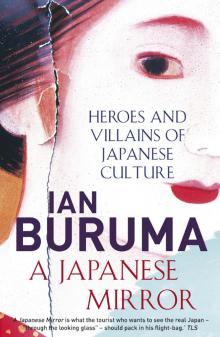 A Japanese Mirror
A Japanese Mirror Taming the Gods
Taming the Gods The China Lover
The China Lover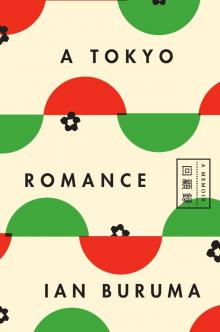 A Tokyo Romance
A Tokyo Romance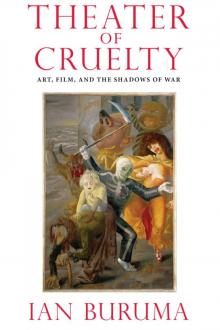 Theater of Cruelty
Theater of Cruelty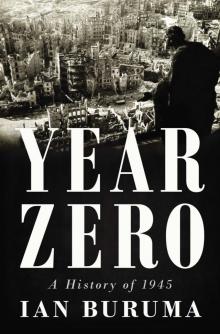 Year Zero
Year Zero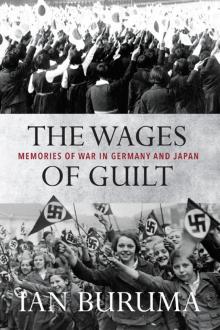 The Wages of Guilt
The Wages of Guilt Murder in Amsterdam
Murder in Amsterdam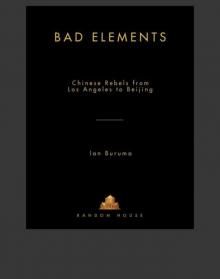 Bad Elements
Bad Elements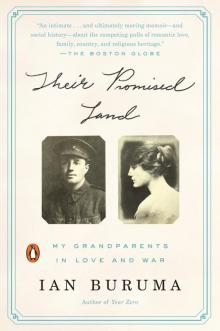 Their Promised Land
Their Promised Land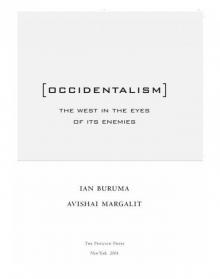 Occidentalism
Occidentalism Anglomania
Anglomania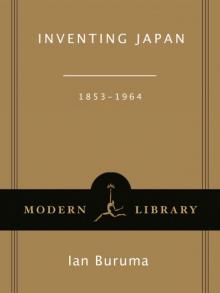 Inventing Japan: 1853-1964 (Modern Library Chronicles)
Inventing Japan: 1853-1964 (Modern Library Chronicles) The Missionary and the Libertine
The Missionary and the Libertine